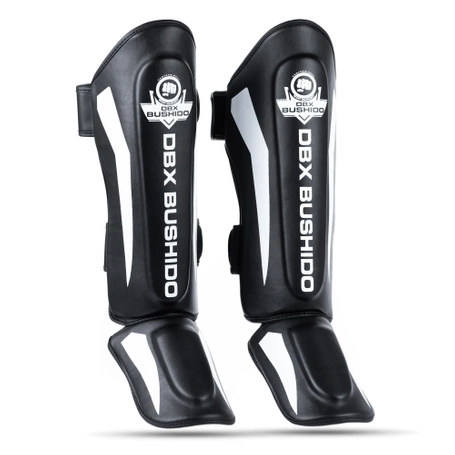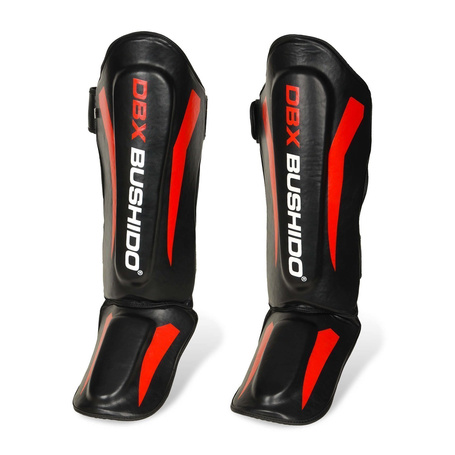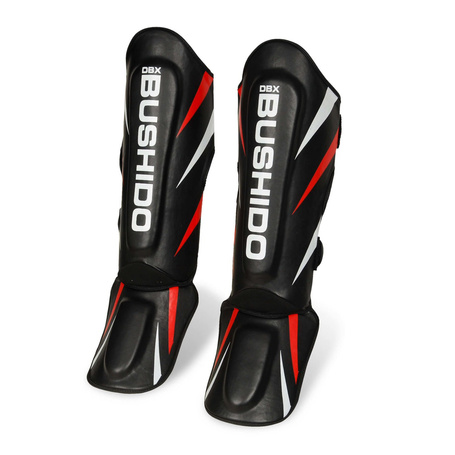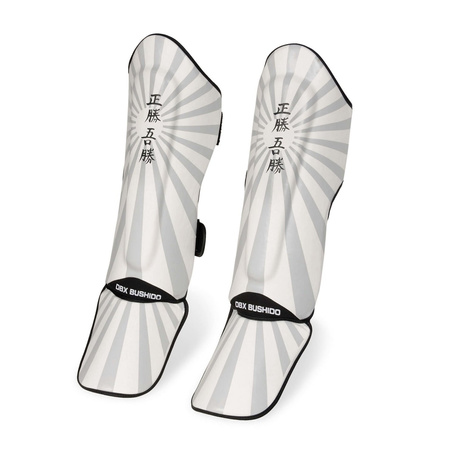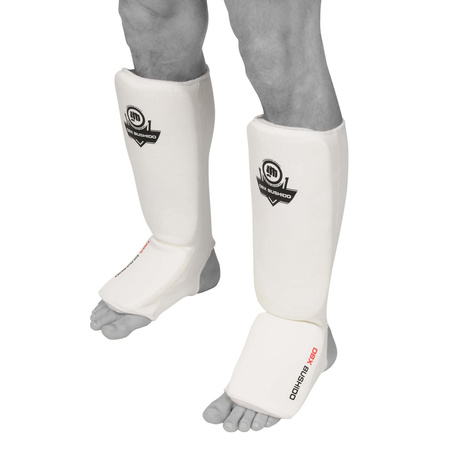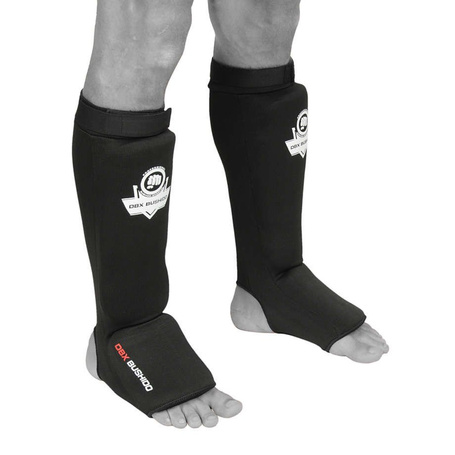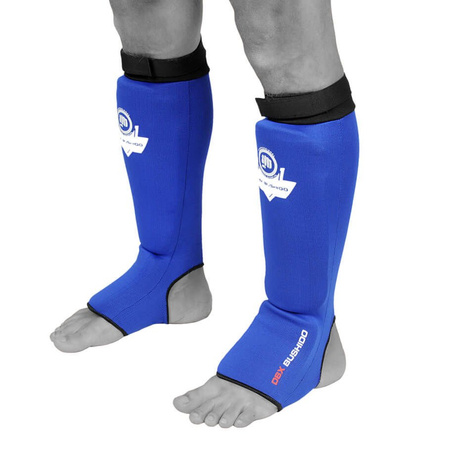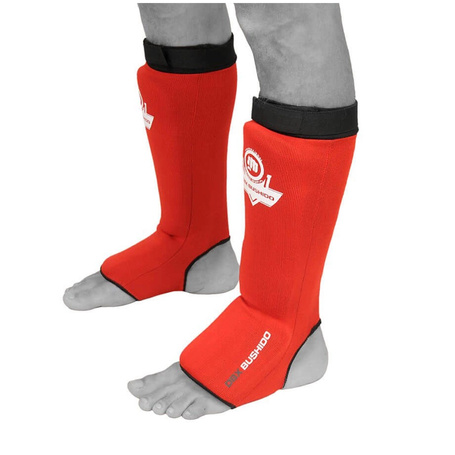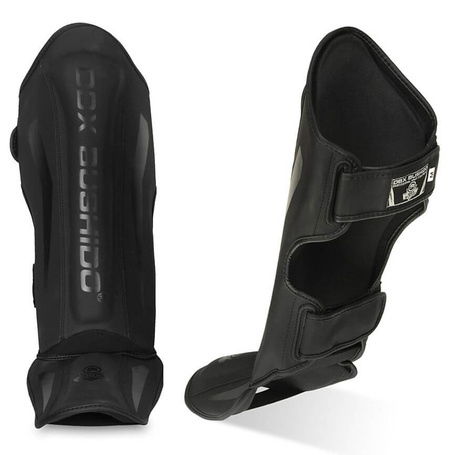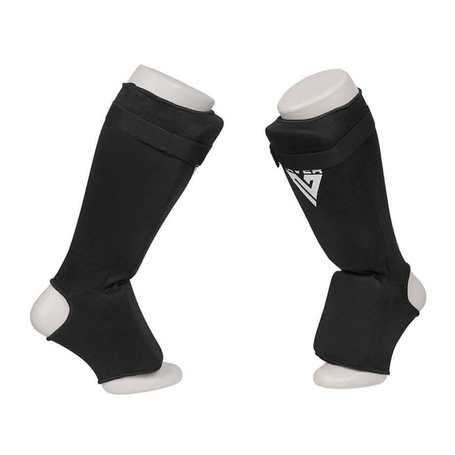What to follow when choosing tibia protectors?

Tibia protectors are essential equipment in such disciplines as: karate, K1, MMA kickboxing, or Muay Thai. In all of the above mentioned martial arts, kicks are a key element. Strikes delivered with the legs are both extremely effective, but also dangerous - not only for the opponent, but also for ourselves. Properly selected tibia protectors will effectively protect us from getting any injuries.
Although we deal fewer blows with our legs than with our hands during the pairing or training process, it is the kicks that are particularly destructive weapons that shock the opponent, but this form of attack has a negative impact on our legs. Regardless of what level of proficiency you are currently at, it is worth working on honing your kicks in a safe and responsible manner during both training and sparring sessions. So that we can take care of both our own safety and that of our sparring partner, it is worth investing in protectors that shield the tibias and feet.
See the video, where we discuss the difference between different types of protectors
What to follow when choosing the right protectors?
First of all, it is worth knowing that the choice is extremely important for our development in martial arts. This is because everything is based on the goals we want to achieve during the training process, as well as the type of martial art we practice. Equally, K1, kickboxing and Muay Thai will require a lot of strong kicks, as well as taking punches on the block. That's why, in this case, shin guards should uncover the legs to ensure freedom, so they should be relatively hard. A very important issue is the correct length of the part that covers the tibias. It is important that the foot is also built up.
MMA protectors often also have to be used for first floor exercises. These types of protectors are less protective of the tibias and feet, but will provide much freer movement during ground fighting. Therefore, if you care about mobility and freedom of movement, opt for this type of protectors, being aware of the lesser protection of the tibias during the derivation of kicks. The neoprene sock does not move, and the thin foot makes it easier to operate the levers while sparring. However, it should be borne in mind that during MMA sparring the main purpose will be to inflict kicks (excluding ground fighting), so it is worth choosing typical tibia protectors for Muay Thai.
Flexible protectors. For those beginning their adventure with combat sports, it is recommended to choose elastic protectors, the so-called. basic elastic, covering the tibias, at the same time not restraining our movements. Flexible protectors can also become a great alternative for those with advanced degrees if they want to further protect their legs during strong kicks. We can wear them underneath larger and tougher protectors, gaining additional padding that, in addition to its protective function, acts as a gap filler between the larger protector size and the tibia.

Materials used in production
The vast majority of the protectors are made of PU, or other synthetic materials. Of course, models made of natural leather are also within reach, but there are fewer of them on the market, and their price is higher. If we consider the durability of natural and artificial leather protectors, it is at a similar level. This is the reason for the specific designs of such protectors, where the material on top (leather) is glued to the insert inside the protector. This results in twin operation in both cases of material wear and does not affect their quality.
That's why a large number of established brands use faux leather in their production. This allows a competitive price without compromising quality. Some companies produce their protectors exclusively from the best quality natural leather, while others use only artificial materials, such as tibia protectors Venum are manufactured only from synthetic leather.
Construction of tibia protectors
What to follow in the selection of protectors so that they fit our legs perfectly? The design and shape of different models in different cases depend on the manufacturer itself. Of course, generally accepted rules apply, according to which most of the best equipment is produced. However, this is not the result of top-down standards, but is simply due to the fact that the protector is always used solely for the main purpose - to protection of your legs. On the purely technical side, it can be said that the wider the protector, the better it covers the shin.
The differences between the various protectors are largely the details and the variety of materials they are made of. Certainly what almost every tibia protector has in common will be a reinforced front section. It is the front parts that are vulnerable to attacks. No wonder, then, that manufacturers go to great lengths to strengthen just this element of the. It is worth noting that all protectors are characterized by thickening on the feet. Although kicks should be inflicted with the tibias commonly known as shins, there may be a situation where you hit with your foot. When the kick will be strong, and at the same time you will hit a hard bone of the opponent (e.g. tibia or elbow) there is a huge risk of suffering a painful and, worst of all, long-healing injury, which can take you out of exercise for a long time.
For this reason it is not recommended to use classic protectors for MMA during Muay Thai or Kickboxing sparring sessions. When you choose the right protector design for your needs and are protected while grinding kicks, there can be a serious problem. This is the anguish of all owners of the cheapest, tibia protectors... We are talking about the movement of the protector during exercise. Correcting them after every kick on the bag is annoying, and doing it during sparring is particularly risky. For this reason, you should make sure that the the protectors fit your legs as snugly as possible.
If this is an important issue for you, opt for protectors with fasteners of the type hook&loop or if you plan on sparring both kicking and grappling, choose slip-on neoprene protectors, whose size will be as close as possible to the width of your legs.

How do I fit the protector to my leg?
When we first choose exercise equipment, we may have quite a problem due to the fact that we have never trained before. We have no knowledge of how the equipment will affect us during training. Deciding to buy protectors blind, you will find out on the first training session how bad a choice you made. That's why you should take advantage of the two hints in this text. A very important element is the length of the footer. Perhaps, the initial training phases for you will be full of inaccurate kicks, hit not with the tibias, but with the foot.
Therefore, it is essential to ensure that the the foot of the protector does not reach further than the end of your toes. If this happens, it will hinder your mobility during exercise. On the other hand, if the bead is too short, it may protect the foot less well. Keep in mind that the training does not consist of attack alone, you will also grind defense against kicks. W Muay-Thai, K1 or in MMA it is done m.in. by bringing the knee up.
That is why it is recommended to try on or measure the protectors to check, whether, after bending the leg in the knee, our kneecap will be covered. Once you have decided what discipline you will use your protectors for, decided on a specific model and selected your size, all you need to do now is train and analyze how the equipment performs in practice. Focus on aspects such as the fit and comfort of the protectors. Improperly fitted pads can limit your mobility. Above all, the level of protection is key. The protectors should protect your tibias well. You are not allowed to feel pain when dealing with kicks, and your tibias are supposed to be realistically protected.

